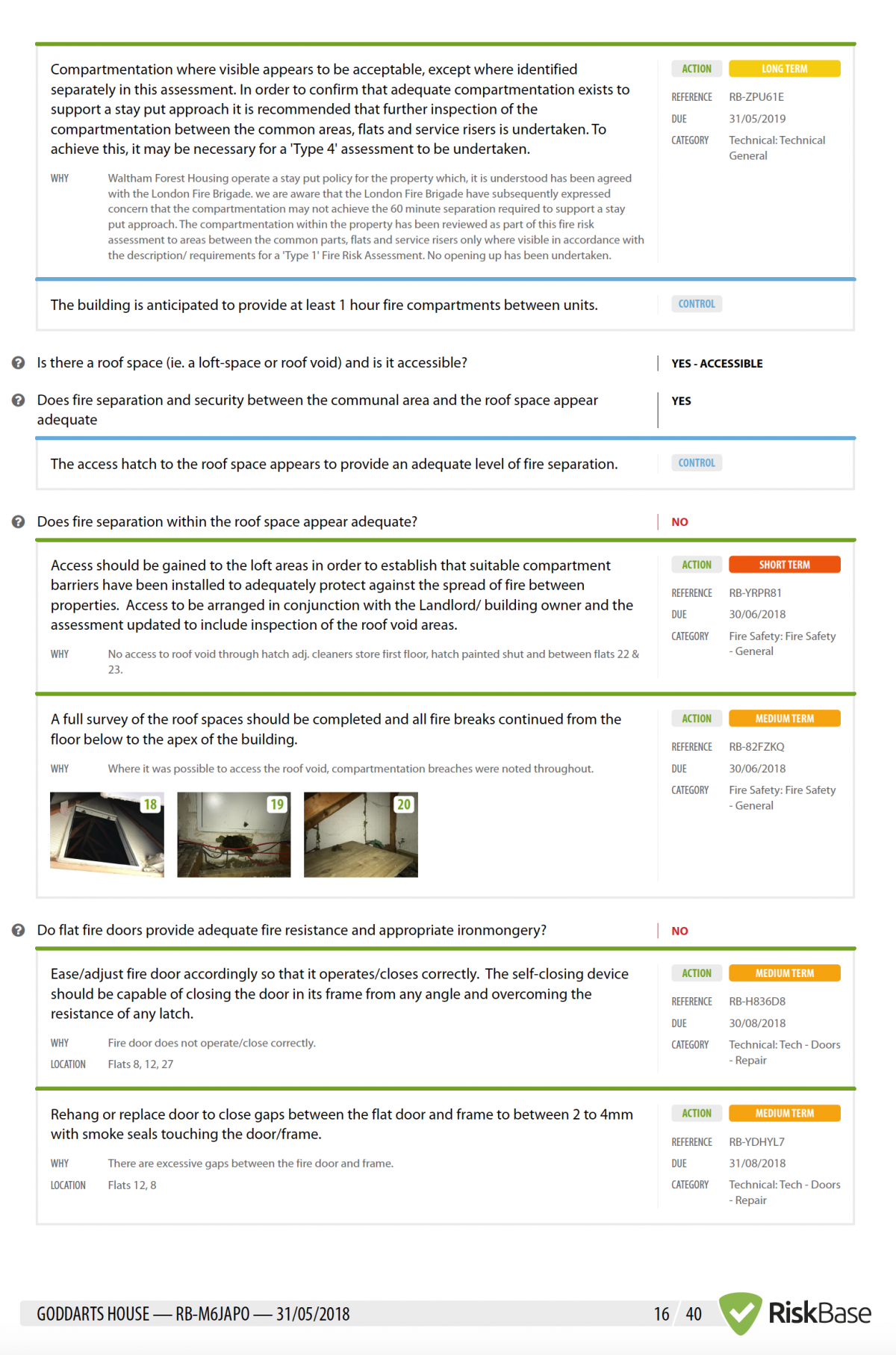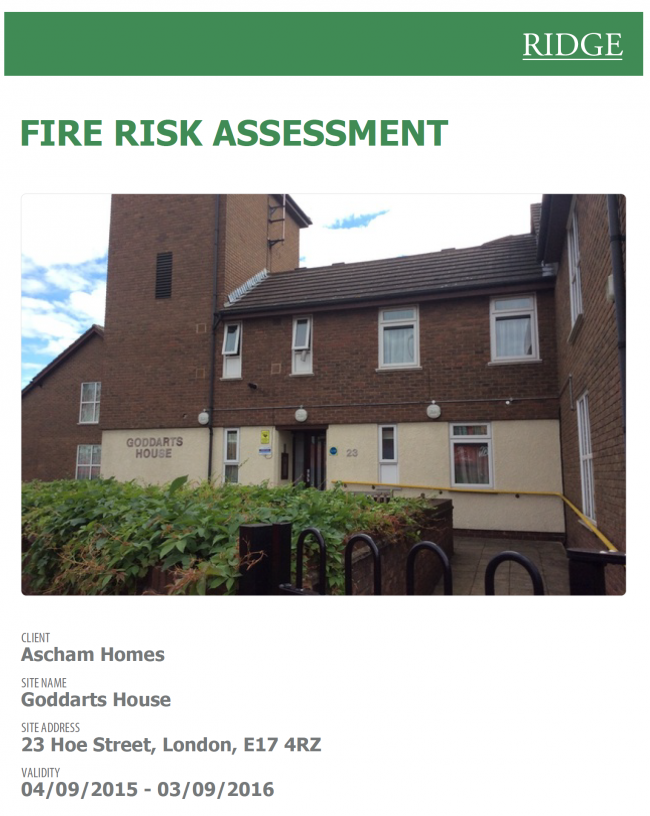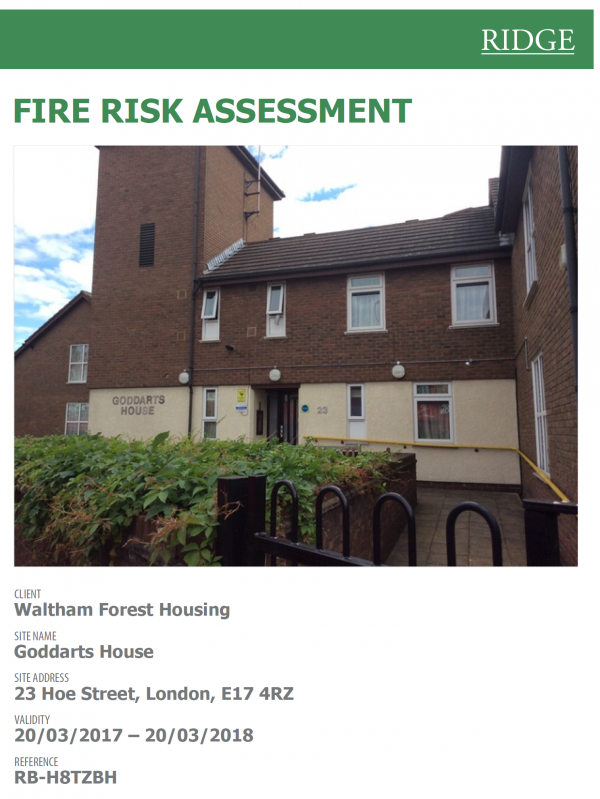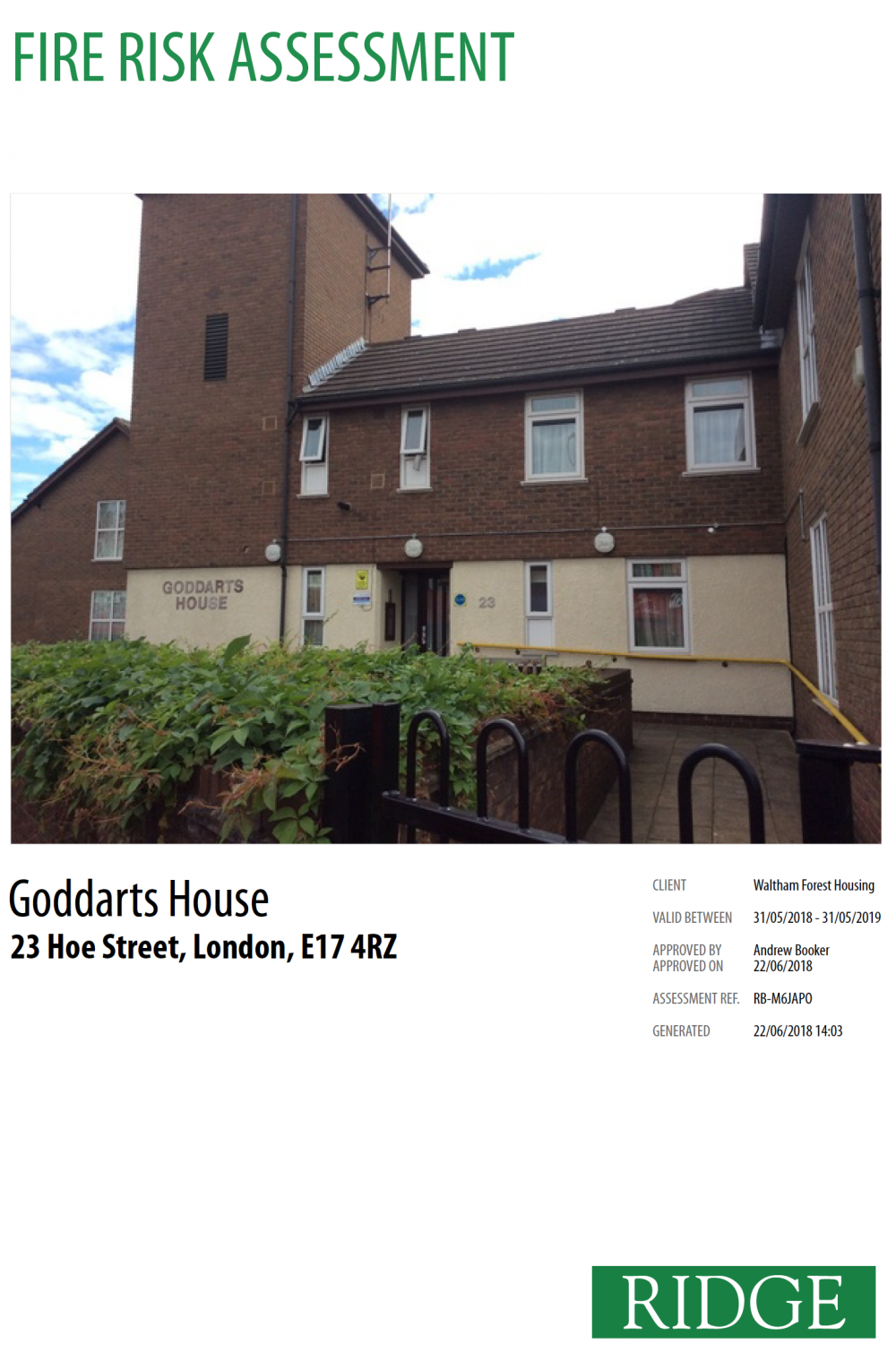Fire safety in Waltham Forest: Cabinet portfolio holder for housing, Cllr. Louise Mitchell, responds but fails to convince
Following on from this blog’s earlier post about fire risks at LBWF’s Goddarts House in Walthamstow, the East London & West Essex Guardian has published a related story, which includes a response from Cllr. Louise Mitchell, Cabinet portfolio member for housing:
www.guardian-series.co.uk/news/17824818.man-handed-eviction-notice-raising-fire-safety-concerns-council/
Much of what Cllr. Mitchell tells the paper consists of predictable platitudes about putting residents first, etc., but she also makes more specific points which seemingly are aimed at disarming her and the council’s critics.
First, she observes that the annual Fire Risk Assessments (FRAs) of council housing facilities, which have been widely quoted by this blog, the East London & West Essex Guardian, and the Waltham Forest Echo, offer ‘only a visual inspection of buildings and do not give in-depth information about structural issues such as compartmentalisation or electrical wiring’, the implication being, it is reasonable to conclude, that if quoted on their own, these documents may – probably will – mislead.
Words like ‘in depth’ and ‘structural’ give Cllr. Mitchell’s statement an air of authority. But is she right?
Consider the section on ‘Compartmentation’ included in the 2018-19 FRA of Goddarts completed by the LBWF’s agent, Ridge, on 31 May 2018.
This extends over five pages, and looks at 9 different metrics. A excerpt illustrates the approach taken:
As is evident, there are cases where Ridge recognises the limits of visual inspection, and so urges the collection of ‘more in-depth information’.
But that said, there are also other cases where Ridge is perfectly happy to reach a conclusion there and then, with no further information needed, a good example being the three flats where it found ‘excessive gaps between the door and frame’ (see bottom entry in the excerpt).
In fact, of the 19 major issues that Ridge discusses across this FRA, 16 are in the latter category, only three in the former.
So the contention that FRAs do not provide a reliable guide to fire risks, that further information is necessary to understand their findings, is for the most part nonsense, a silly red herring.
Equally controversial is another of Cllr. Mitchell’s assertions, that ‘The council carries out fire risk assessments every year but…they do not cover a specific time period’.
This appears to be an attempt to counter those who have pointed out that there are sometimes lengthy gaps between successive FRAs, casting doubt on whether the most up to date information about risks is necessarily always available.
However, once again, Cllr. Mitchell’s grasp of the facts seems shaky. For as anyone familiar with recent FRAs in Waltham Forest will know, each is specifically marked on the cover page as ‘valid’ solely for a particular time period, as these examples relating to Goddarts House illustrate:
Overall, the impression that emerges is of a local authority caught with its pants down over fire safety, scrambling to explain why it has left its tenants exposed to significant risks over a period of years, and in doing so only digging itself into a larger and larger hole.
And that simply is not good enough.
ADDENDUM
To the credit of its editor, James Cracknell, the Waltham Forest Echo continues to publish important articles on the fire safety scandal in Waltham Forest. In issue number 53 of August 2019, Mark Skinner, a retired chief fire safety adviser who lives in Burrell Tower, Leyton, examines some of the building’s flaws, and adds that though he submitted a ‘long report’ to LBWF about ‘the lack of effective passive fire safety measures’ in both Burrell and the neighbouring Rayner Tower, no substantive reply has been forthcoming; while the redoubtable Michelle Edwards recounts her struggle to expose the fire risks at Northwood Tower, and the start of a tenant fightback.
Ms. Edwards ends with a withering observation that gets right to the heart of the matter, writing: ‘for a council claiming to be committed to fire safety, one wonders why [external] assessors keep throwing up the same significant findings year after year’.




